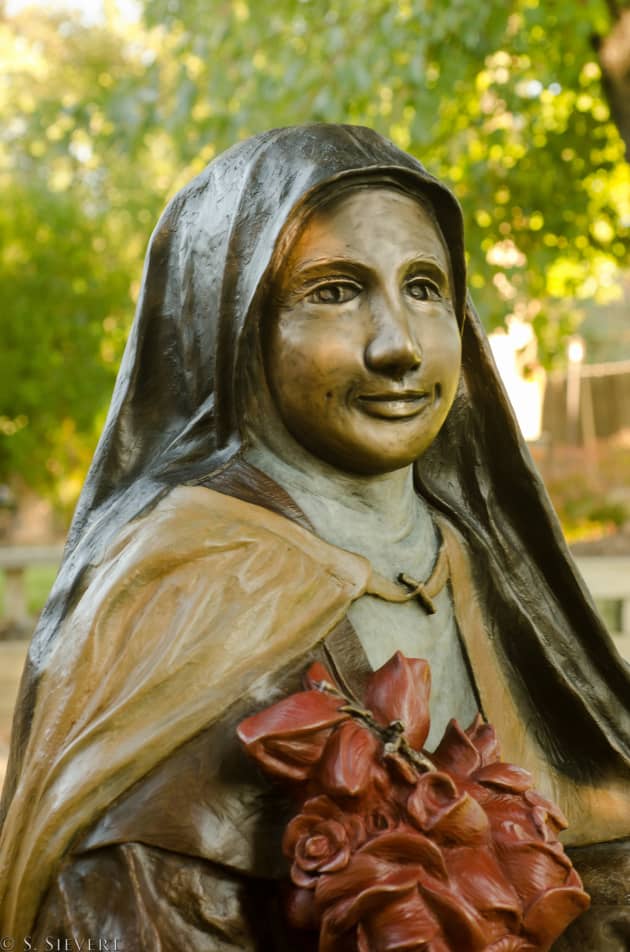

Soon after on Christmas Eve 1884, she recounts having a remarkable conversion of spirit. Therese felt her health and mental state returned to normal very quickly. Eventually, Therese felt completely healed after her sister’s placed a statue of the Virgin Mary at the foot of the bed. For three weeks she suffered from a high fever. The doctors were at a loss as to the cause.

Shortly afterwards Therese experienced a painful illness, in which she suffered delusions. This made Therese feel like she had lost her second mother. She enjoyed being taught at home however, after a while, her eldest sister decided to leave home and enter the local Carmel Convent at Lisieux. Eventually, her father agreed for Therese to return home and be taught by her elder sister, Celine. She was unhappy at school, where her natural precociousness and piety made other school children jealous. The next couple of years of St Therese’s’ life was a period of inner turmoil. Aged only four years old, she felt the pain of separation and instinctively turned to the Virgin Mary for comfort and reassurance.

However, this early childhood idyll was broken by the early death of her Mother (from breast cancer). She remembers the idyll of her early childhood, spending time with her parents and five sisters in the un-spoilt French countryside. She was born into a pious and loving Catholic family. Short bio of St Therese of Lisieuxįrom an early age, it was Therese’s ambition and desire to be a saint. Her books explained her spiritual path of love and selflessness, and she became one of only three females to be considered a doctor of the Catholic Church.

However, after her death, her autobiography – Story of a Soul was published and became a best-seller around the world. St Therese of Lisieux (1873-1897) was a French Catholic who became a Carmelite nun at an early age.


 0 kommentar(er)
0 kommentar(er)
